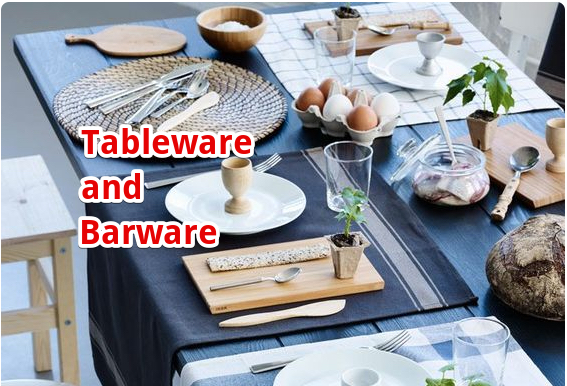Use Sidebar LHS to navigate
For global help click here
Distribution - Tableware
Login to see Training flows specific to your business
-
Daily Purchase Order (SaaSplications Online Help)
-
Drop Shipments - supplier sends direct to customer (SaaSplications Online Help)
-
Pricing Contracts (SaaSplications Online Help)
-
Printed Tableware - customer specific print (SaaSplications Online Help)
-
Product Forecasting Based on Sales History (SaaSplications Online Help)
-
Purchase Order Variations (SaaSplications Online Help)
-
Purchase Reports Dashboard (SaaSplications Online Help)
-
Return Authorisations, Supplier Claims, Sale or Return items (SaaSplications Online Help)
-
Sales Orders / customer shopping cart for Tableware (SaaSplications Online Help)
-
Tableware Articles (SaaSplications Online Help)
-
Warehouse role training plans (SaaSplications Online Help)
What is Tableware?
Most items needed in a Restaurant, Cafe, Coffee Shop, Kitchen that are not takeaway items. Examples include - Glasses, Cups, plates, cutlery, serving utensils, serving platters, kitchen utensils (knives, chopping boards, saucepans etc etc), Barware
How is it different to other Items ?
Tableware is unusual in that a carton is not a carton - it is 12 eachs to both customers and suppliers.
So a single SKU is created - with quantity breaks on the purchase and sale
How do you know if you need Tableware Items?
You purchase and sell in quantity breaks that are not separate Stock Keeping Units.
As an example - If your supplier
- sells in a minimum of 6 plates
- sends you a carton with 6 plates in it
- wants a purchase order line for 6 plates (not a carton of 6 plates)
- Also sells in a quantity of 48 plates
- sends you 8 cartons with 6 plates each
- wants a purchase order line for 48 plates (not 8 cartons of 6 plates)
- you sell to your customers
- a minimum of 4 plates (ie you open cartons in the warehouse and repackage them)
- a quantity of 6 plates at a different price
It is common to sell in smaller quantities than the minimum supplied by the supplier
Sales Orders and Purchase Orders need to understand this important fundamental difference.
- Indicate the quantities the product can be sold in when capturing an order including in the shopping cart
- Forecasting minimum purchase quantities - and forecasting raises purchase orders for minimum quantities automatically.
- Can enter Manual Purchase Orders only in the quantities the product can be purchased in
Printed Tableware
Tableware is also commonly printed for customers, a brand images on drinking glasses, printing on the plates or cutlery.
Printed items may not be sold to others - a private SKU limits visibility in the system to customers or customer groups allowed to purchase the item - including the public and logged in shopping cart.
Printed items may need to be paid in advance - or require some deposit to be paid and tracked against the SKU
A customer order for printed items may require (and need to price for)
- A Purchase Order of unprinted items for the main supplier to supply to the printer - a Drop Ship Purchase Order
- Picking and sending of unprinted items from one of your warehouses to the printer
- A Purchase Order to the printer indicating the items they need to print with some print services
- Indication on the purchase order to the printer where the printed items are to be sent, one of your warehouses or direct to a customer address.
Related content
For information about SaaSplications go to http://saasplications.com.au
